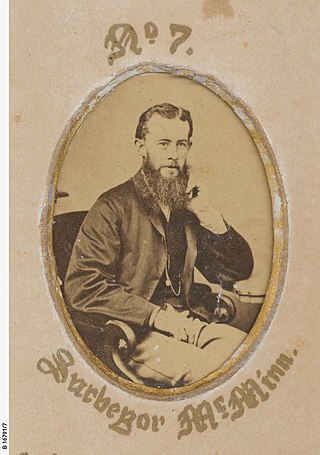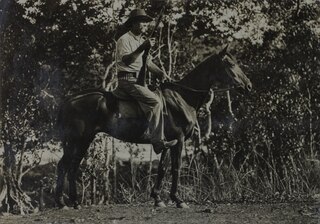
The Northern Territory is an Australian territory in the central and central northern regions of Australia. The Northern Territory shares its borders with Western Australia to the west, South Australia to the south, and Queensland to the east. To the north, the territory looks out to the Timor Sea, the Arafura Sea and the Gulf of Carpentaria, including Western New Guinea and other islands of the Indonesian archipelago.
Mataranka is a town and locality in the Northern Territory of Australia located about 420 km (260 mi.) southeast of the territory capital of Darwin, and 107 km (66 mi.) south of Katherine. At the 2016 census, Mataranka recorded a population of 350. 29.5% of residents are Aboriginal and/or Torres Strait Islander.

Government House is the office and official residence of the Administrator of the Northern Territory in Darwin, Australia. Built between 1870 and 1871, with later renovations between 1878 and 1879, the building is set on 13,000 square metres of hillside gardens in the centre of the Darwin business district, on The Esplanade.

Australian Football in the Northern Territory is the most popular sport, particularly with indigenous Australian communities in Darwin, Alice Springs and the Tiwi Islands. It is governed by AFL Northern Territory.

Harold George "H. G." Nelson was an Australian politician and trade unionist who was the first person to represent the Northern Territory in the House of Representatives. He arrived in the territory in 1914 to work as an organiser for the Australian Workers' Union (AWU), and was a leader of the Darwin rebellion of 1918. He subsequently served in the House of Representatives from 1922 to 1934, initially as an independent and then as a member of the Labor Party.

Batchelor is a town in the Northern Territory of Australia. The town is the current seat and largest town of the Coomalie Shire local government area. It is located 98 kilometres (61 mi) south of the territory capital, Darwin. A number of residents commute to Darwin and its suburbs for work.

Parap is an inner suburb of the city of Darwin, Northern Territory, Australia. It is the traditional country and waterways of the Larrakia people.

John Anderson Gilruth was a Scottish-Australian veterinary scientist and administrator. He is particularly noted for being Administrator of the Northern Territory from 1912 to 1918, when he was recalled after an angry mob demanded that he resign. This incident is known as the Darwin Rebellion.

The Darwin rebellion of 17 December 1918 was the culmination of unrest in the Australian Workers' Union which had existed between 1911 and early 1919. Led by Harold Nelson, over 1,000 demonstrators marched on Government House at Liberty Square in Darwin, Northern Territory, Australia where they burnt an effigy of the Administrator of the Northern Territory, John Gilruth, and demanded his resignation.

The Victoria Hotel, or The Vic as it is commonly known, is a heritage listed pub located in Darwin, Northern Territory, Australia. Built in 1890, it is an important historical building but is currently closed.
Rev. Ridgway William Newland, frequently spelled "Ridgeway", was an English Congregationalist minister who with his large family emigrated to the young colony of South Australia, where he had a considerable influence in the Encounter Bay district. Many of his descendants were important in the history of the State. He has been called "The father of the South".

Gilbert Rotherdale McMinnCE, SM, was an Australian surveyor born in Ireland noted for his work in the Northern Territory surveying the Overland Telegraph Line. His middle name is occasionally spelt "Rutherdale".

Kahlin Compound was an institution for part-Aboriginal people in Darwin in the Northern Territory of Australia between 1913 and 1939. After 1924, "half-caste" children were separated from their parents and other adults and moved to an institution at Myilly Point.

Maranboy was a tin mine near Barunga, about 70 kilometres east of Katherine in the Northern Territory of Australia.

Cissy McLeod sometimes spelt Cissie McLeod was the first Indigenous woman in Australia to receive a bronze medal from the Royal Humane Society for her act of bravery when saving her adoptive mother in Darwin in the Northern Territory of Australia.

This is a list of members of the Northern Territory Legislative Council from 13 December 1947 to 10 December 1949.
This is a list of members of the Northern Territory Legislative Council from 28 April 1951 to 29 May 1954.

Robert Joel (Joe) Cooper was a buffalo hunter in the Northern Territory who spent much of his life on Melville Island (Yermalner).

Patrick "Paddy" Cahill was a buffalo hunter, farmer and protector of Aborigines in the Northern Territory.

















